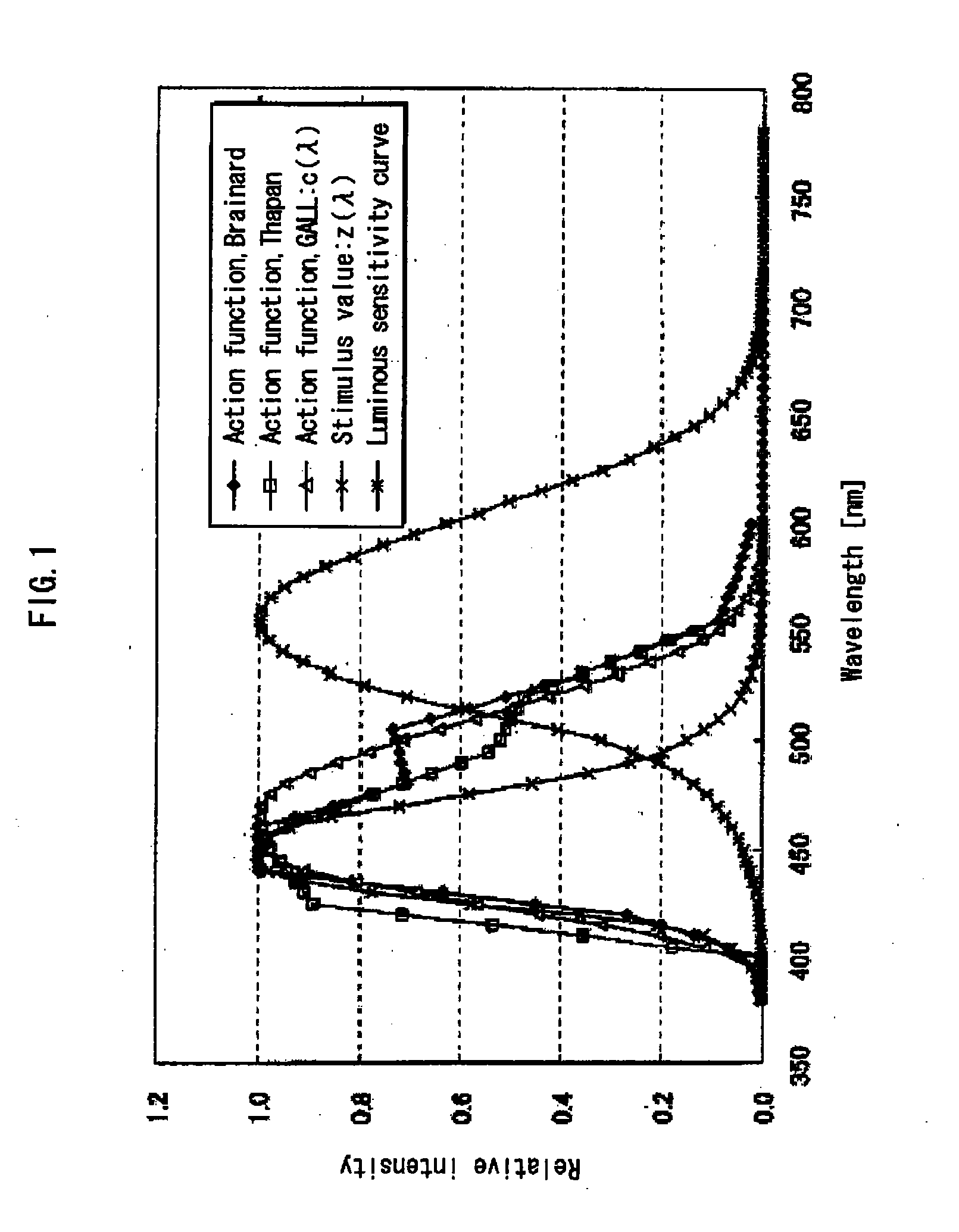Fluorescent lamp
a fluorescent lamp and fluorescent technology, applied in the field of fluorescent lamps, can solve the problems of low emission efficiency of blue-emitting phosphor, no clear means to optimize the action spectra of lighting sources currently, and no discussion on deterioration of visual environmen
- Summary
- Abstract
- Description
- Claims
- Application Information
AI Technical Summary
Benefits of technology
Problems solved by technology
Method used
Image
Examples
first embodiment
[0288]FIG. 10A schematically shows a fluorescent lamp 100 of an embodiment pertaining to the present invention. FIG. 10B schematically shows a longitudinal sectional view of a structure of the fluorescent lamp 100 of the present embodiment.
[0289]The fluorescent lamp 100 of the present embodiment includes a bulb 10 (lamp arc tube) composed of a glass tube and a phosphor layer 20 formed on an inner surface of the bulb 10. In the present embodiment, light emitted from the fluorescent lamp 100 has a high color temperature which is a correlated color temperature above 7100 [K]. In other words, the fluorescent lamp 100 of the present embodiment is a fluorescent lamp that has an ultra-high color temperature exceeding the highest light color 7100 [K] specified by JIS Z9112:1990 (or IEC 60081-1997) for fluorescent lamps for general lighting.
[0290]The phosphor layer 20 of the present embodiment includes a red emitting rare-earth phosphor, a green emitting rare-earth phosphor, and a blue emitt...
second embodiment
[0385]The following describes a second embodiment of the present invention. In the second embodiment, a theoretical explanation is given on a relative tendency of the effects caused by the present invention, based on the theoretical spectral distributions in a case where an emission center whose main emission peak is located between the main emission peaks of the blue emitting rare-earth phosphor and the green emitting rare-earth phosphor, preferably in a range of 480 [nm] to 520 [nm].
[0386]First, as a theoretical model of a conventional ordinary narrow-band fluorescent lamp, the following structure is theoretically simulated: the structure in which the phosphor layer includes at least a red emitting rare-earth phosphor containing a rare-earth element as an emission center whose emission peak is located in a range of 605 [nm] to 625 [nm], a green emitting rare-earth phosphor containing a rare-earth element as an emission center whose main emission peak is located in a range of 540 [...
third embodiment
[0402]The following describes a third embodiment of the present invention. In the third embodiment, a theoretical explanation is given on a relative tendency of advantageous effects achieved by the present invention, based on the theoretical spectral distributions in a case where the half width is extended toward a long wavelength from the emission peak of the blue emitting rare-earth phosphor.
[0403]FIGS. 36 to 38 show results of simulations performed under the same conditions as the second embodiment except the following, in order to simulate that a blue phosphor which was used to enhance the emission between the main emission peaks of the green emitting rare-earth phosphor and the blue emitting rare-earth phosphor and which has the main emission peak in a range of 440 [nm] to 460 [nm] is a blue emitting phosphor whose half width from the emission peak toward a longer wavelength is 50 [nm] or greater: the emission intensity of the blue emitting phosphor being 100% in the range of 4...
PUM
 Login to View More
Login to View More Abstract
Description
Claims
Application Information
 Login to View More
Login to View More - R&D
- Intellectual Property
- Life Sciences
- Materials
- Tech Scout
- Unparalleled Data Quality
- Higher Quality Content
- 60% Fewer Hallucinations
Browse by: Latest US Patents, China's latest patents, Technical Efficacy Thesaurus, Application Domain, Technology Topic, Popular Technical Reports.
© 2025 PatSnap. All rights reserved.Legal|Privacy policy|Modern Slavery Act Transparency Statement|Sitemap|About US| Contact US: help@patsnap.com



